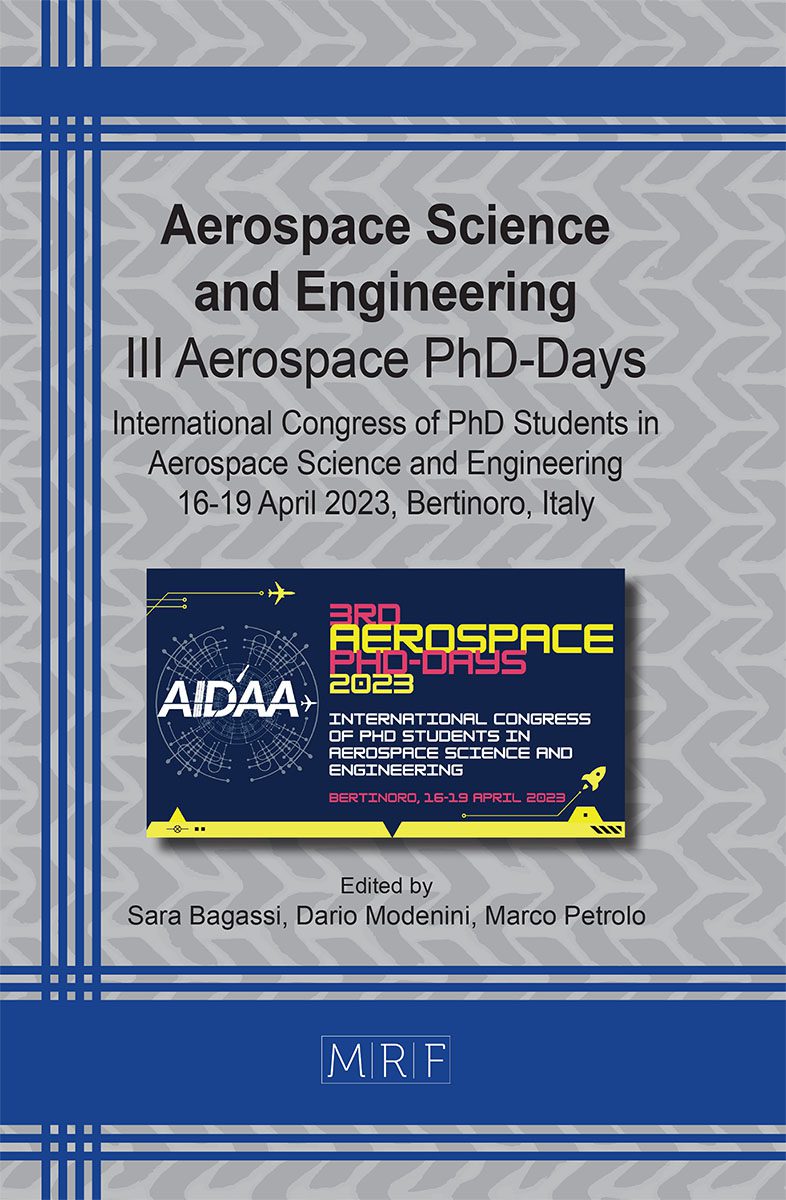Recent advances in dynamical modeling and attitude control of flexible spacecraft
David Paolo Madonna
download PDFAbstract. This work is focused on some recent advances on spacecraft dynamical modeling and attitude control. First, the problem of correctly linearizing the elastic behavior of spinning flexible spacecraft is discussed, and an example is presented that addresses this topic from both the analytical and the numerical point of view. Then, attitude control is considered and a new feedback law for single axis alignment is presented, together with the inclusion of accurate modeling of the actuation dynamics. Moreover, numerical simulations for the reorientation of a flexible multibody spacecraft are provided.
Keywords
Flexible Spacecraft, Stress Stiffening, Kane’s Method, Nonlinear Feedback Attitude Control, Control Momentum Gyroscopes
Published online 9/1/2023, 8 pages
Copyright © 2023 by the author(s)
Published under license by Materials Research Forum LLC., Millersville PA, USA
Citation: David Paolo Madonna, Recent advances in dynamical modeling and attitude control of flexible spacecraft, Materials Research Proceedings, Vol. 33, pp 140-147, 2023
DOI: https://doi.org/10.21741/9781644902677-21
The article was published as article 21 of the book Aerospace Science and Engineering
![]() Content from this work may be used under the terms of the Creative Commons Attribution 3.0 license. Any further distribution of this work must maintain attribution to the author(s) and the title of the work, journal citation and DOI.
Content from this work may be used under the terms of the Creative Commons Attribution 3.0 license. Any further distribution of this work must maintain attribution to the author(s) and the title of the work, journal citation and DOI.
References
[1] T. R. Kane, R. Ryan, A. K. Banerjee, Synamics of a Cantilever Beam Attached to a Moving Base, Journal of Guidance, Control, and Dynamics, Volume 10, Issue 2, 1987. https://doi.org/10.2514/3.20195
[2] A. H. de Ruitter, C. Damaren, J. Forbes, Spacecraft Dynamics and Control: An Introduction, Wiley, 2013. https://doi.org/10.5860/choice.51-0301
[3] F. A. Leve, B. Hamilton, M. Peck, Spacecraft Momentum Control Systems, Springer, 2015. https://doi.org/10.1007/978-3-319-22563-0
[4] P. Santini, Stability of flexible spacecrafts, Acta Astronautica, Volume 3, Issues 9–10, Pages 685-713, 1976. https://doi.org/10.1016/0094-5765(76)90106-5
[5] A. K. Banerjee, Flexible Multibody Dynamics: Efficient Formulations and Applications, Wiley, 2016. https://doi.org/10.1002/9781119015635
[6] T. R. Kane, P. W. Likins, D. A. Levinson, Spacecraft Dynamics, McGraw-Hill, 1983.
[7] R. D, Cook, Concepts and Applications of Finite Element Analysis, McGraw-Hill, 1985.
[8] S. Rao, Vibration of Continuous Systems, Wiley, 2007. https://doi.org/10.1002/9780470117866
[9] D. P. Madonna, M. Pontani, P. Gasbarri, Attitude Maneuvers of a Flexible Spacecraft for Space Debris Detection and Collision Avoidance, Proceedings of the 73rd International Astronautical Congress, Paper IAC-22,C1,2,1,x68387, 2022.
[10] M. Pontani, Booklets and lecture notes of Space and Astronautical Engineering course “Advanced Spacecraft Dyanmics“
[11] M. Pontani, I. Napoli, A New Guidance and Control Architecture for Orbit Docking via Feedback Linearization, Proceedings of the 73rd International Astronautical Congress, Paper IAC-21-C1.1.14, 2021.
[12] D. P. Madonna, M. Pontani, P. Gasbarri, Nonlinear Attitude Maneuvering of a Flexible Spacecraft for Space Debris Tracking and Collision Avoidance, submitted to Acta Astroanutica.
[13] A. Mony, H. Hablani, G. Sharma, Control Momentum Gyro (CMG) Sizing and Cluster Configuration Selectionfor Agile Spacecraft10th National Symposium and Exhibition on Aerospace and Related Mechanisms, 2016.












